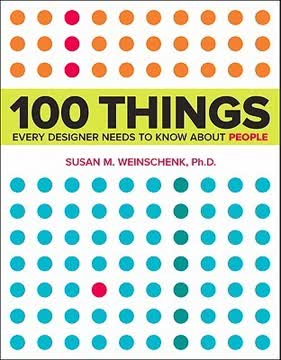Searching...
Top 10 Books for Designers on Interior Lighting Mastery
Discover the top 10 must-read books for designers focusing on interior lighting, enhancing your skills and creativity in design.
Book Summaries
Donald Norman's classic work on design principles emphasizes the importance of user-centered design, making it a must-read for designers focused on creating intuitive and functional spaces, including effective lighting.
3 Key Takeaways:
- Design impacts everyday life: Make the invisible visible
- Bridge the gulfs of execution and evaluation
- Use constraints and affordances to guide user actions
A Common Sense Approach to Web Usability
Steve Krug's principles of usability are essential for designers focused on creating intuitive spaces. His insights can guide effective lighting design that enhances user experience.
3 Key Takeaways:
- Don't Make Users Think: Design for Intuition and Clarity
- Web Users Scan, Don't Read: Optimize for Quick Comprehension
- Create Clear Visual Hierarchies and Conventions
Alain de Botton's exploration of how architecture influences our emotions provides invaluable insights for designers looking to create spaces that resonate with users. His eloquent prose and philosophical approach make this book a thought-provoking read.
3 Key Takeaways:
- Architecture shapes our emotions and behavior
- The pursuit of architectural beauty is complex and evolving
- Buildings communicate values and ideals through their design
How Design Thinking Transforms Organizations and Inspires Innovation
Tim Brown's insights into design thinking are invaluable for interior designers looking to innovate in their lighting designs. His emphasis on empathy and collaboration can lead to more user-centered solutions.
3 Key Takeaways:
- Design thinking is a human-centered approach to innovation
- Observation and empathy are crucial for understanding user needs
- Prototyping and iterative refinement are key to successful design
John Maeda's exploration of simplicity in design is crucial for interior designers aiming to create elegant and functional spaces. His principles can guide effective lighting choices that enhance user experience.
3 Key Takeaways:
- Simplicity is achieved through thoughtful reduction
- Organization creates order from chaos
- Time savings equate to simplicity
Susan Weinschenk's insights into human behavior and psychology are invaluable for designers looking to create spaces that resonate with users' needs and preferences, particularly in lighting design.
3 Key Takeaways:
- Visual perception is a complex interplay of sensory input and brain interpretation
- Memory is limited but can be enhanced through strategic techniques
- Attention is selective and easily manipulated by external factors
Mike Monteiro's practical advice on running a design business is essential for designers looking to establish themselves in the industry. His insights on client relationships and project management are particularly relevant for those working on interior lighting projects.
3 Key Takeaways:
- Design is a job: Treat it with professionalism and respect
- Cultivate clients through networking and referrals
- Price your work based on value, not time
Communicate with Stakeholders, Keep Your Sanity, and Deliver the Best User Experience
Tom Greever's focus on communication in design is essential for interior designers who need to articulate their lighting choices to clients and stakeholders effectively. His practical advice can help navigate complex project dynamics.
3 Key Takeaways:
- Design is more than aesthetics; it solves business problems
- Effective communication is crucial for designers
- Understand and empathize with stakeholders
Simple Guide to Understanding User Interface Design Guidelines
Jeff Johnson's book bridges cognitive psychology and design principles, making it essential for designers aiming to create user-friendly environments. Its insights into perception and attention are particularly relevant for effective interior lighting design.
3 Key Takeaways:
- Our perception is biased by experience, context, and goals
- Vision is optimized for structure and contrast, not absolute brightness
- Peripheral vision is poor but serves important functions












